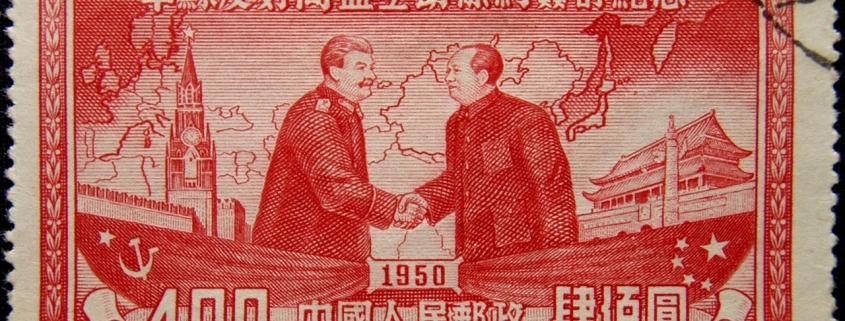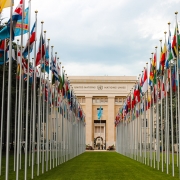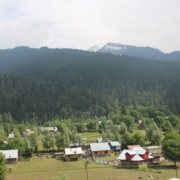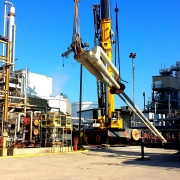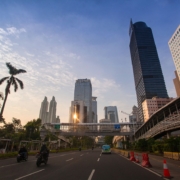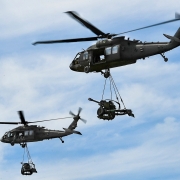What caused the Sino-Soviet Split
What led to the Sino-Soviet split?
As part of the Cold War conflict, the two Great Powers (China and Russia) that share ideological similarities (i.e. Communism), political clashes had resulted in the deterioration of bilateral relations. From 1950 to 1979, the persistent sense of mutual distrust and antagonism have caused the outbreak of tensions that occasionally took the form of close military confrontation.
Topic of Study [For H1 History Students]:
Section B: Essay Writing
Theme II: Cold War in Asia [1945-1991] – Superpower relations with China (1950-1979): Sino-Soviet relations
In the following part, we will examine the major events that contributed to the deterioration in Sino-Soviet relations from 1950 to 1979. It is important to consider the roles of China and Soviet Union, especially the political leaders.
1. [Stalin & Mao] Sino-Soviet Treaty of Friendship of 1950
Following the Communist Party of China’s (CCP) victory during the Chinese Civil War, Stalin extended his invitation to CCP Chairman, Mao Zedong, resulting in the signing of the Treaty of Friendship on 14 Feb 1950.
For the People’s Republic of China (PRC), the Treaty offered both economic and security benefits. Soviet aid of $300 million in loans was handed out to China. Additionally, Russia offered security support for China. For Russia, the Treaty was beneficial as Stalin would gain from a new trading partner.
However, the Treaty had sowed the seeds of the Sino-Soviet split. Mao took offense at the unequal bilateral relations with Russia. For example, the above-mentioned Soviet loans had to be repaid with additional interest.
2. [Khrushchev & Mao] Khrushchev’s ‘Peaceful Coexistence’
In 1956, Soviet leader Nikita Khrushchev introduced a new Soviet foreign policy at the 20th Congress of the Communist Party of Soviet Union (CPSU) – Peaceful coexistence.
Khrushchev believed that continued aggression against the Western nations, especially USA, would eventually result in a nuclear war (i.e. Mutually Assured Destruction). Therefore, he proposed that the Soviet Union should coexist than antagonise Western, capitalist nations.
However, Mao criticized Khrushchev’s peaceful coexistence, labeling it as a ‘revisionist’ form of Marxism. In contrast, Mao advocated a firm belief that Marxism-Leninism would clash with Western ideology (capitalism and democracy), resulting in an inevitable conflict. Hence, ideological differences between the two leaders led to the widening Sino-Soviet split.
3. [Khrushchev & Mao] Mao’s Great Leap Forward
From 1958 to 1962, Mao implemented a large-scale economic and social campaign known as the Great Leap Forward. It was based on a traditional Marxist-Leninist method that focused on the mass mobilization of citizens for rapid industrialization.
However, the Great Leap Forward turned out to be a disaster. The inefficient model caused the estimated death tool of 56 million. Additionally, Khrushchev disagreed with Mao’s approach and withdrew Soviet support, thereby halting China’s nuclear programme.
4. [Khrushchev & Mao] Exchange of verbal aggression
In Jun 1960, the Romanian Communist Party Congress was held. During the meeting, both Khrushchev and Mao engaged in a ‘war of words’, in which they criticized one another publicly.
For example, Khrushchev accused Mao of being ‘a nationalist, an adventurist and a deviationist’. Similarly, Mao labelled Khrushchev as a ‘patriarchal, arbitrary and tyrannical’ Marxist revisionist.
5. [Khrushchev & Mao] Cuban Missile Crisis & Sino-Indian War of 1962
During the October Crisis, Mao accused Khrushchev of being cowardly towards USA, following the latter’s agreement to dismantle the missile bases in Cuba. Again, Khrushchev insisted that his foreign policy of peaceful coexistence was critical to avert a nuclear disaster. Yet, Mao argued that the Soviet Union had failed to support the communist revolution and lost its credibility as the leader.
Similarly, in Oct 1962, a border dispute between China and India resulted in a military confrontation. However, contrary to Mao’s expectations, Soviet Union did not provide security support to China. Hence, the Sino-Indian War had confirmed suspicions of a Sino-Soviet split.
6. [Brezhnev & Mao] Sino-Soviet border conflict
The period from Mar to Sep 1969 was arguably the peak of the Sino-Soviet split. In Mar 1969, the Soviet Union invaded China and occupied the disputed area – Damansky (Zhenbao) Island. The border conflict nearly led to the outbreak of another world war. The incident was a significant turning point in Cold War history as Mao sought rapprochement with the USA to avoid a two-way confrontation with the superpowers.
What can we learn from this case study?
Consider the following questions to understand the case study:
– How far do you agree that ideological differences were the main cause of the Sino-Soviet split from 1950 to 1970? [to be discussed in class]
Besides the consideration of the above-mentioned factors that affected the superpower relations with China, you can sign up for our JC History Tuition to develop effective critical thinking and essay writing skills.
The H2 and H1 History Tuition feature online discussion and writing practices to enhance your knowledge application skills. Get useful study notes and clarify your doubts on the subject with the tutor. You can also follow our Telegram Channel to get useful updates.
We have other JC tuition classes, such as JC Math Tuition and JC Chemistry Tuition. For Secondary Tuition, we provide Secondary English Tuition, Secondary Math tuition, Secondary Chemistry Tuition, Social Studies Tuition, Geography, History Tuition and Secondary Economics Tuition. For Primary Tuition, we have Primary English, Math and Science Tuition. Call 9658 5789 to find out more.

